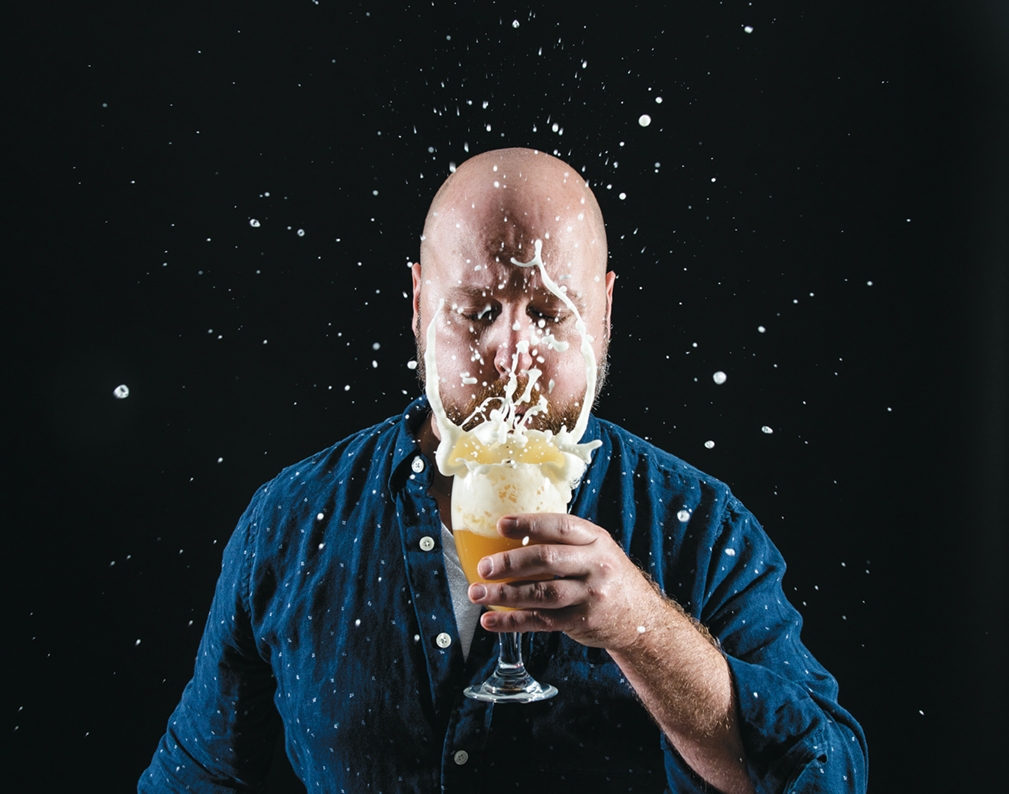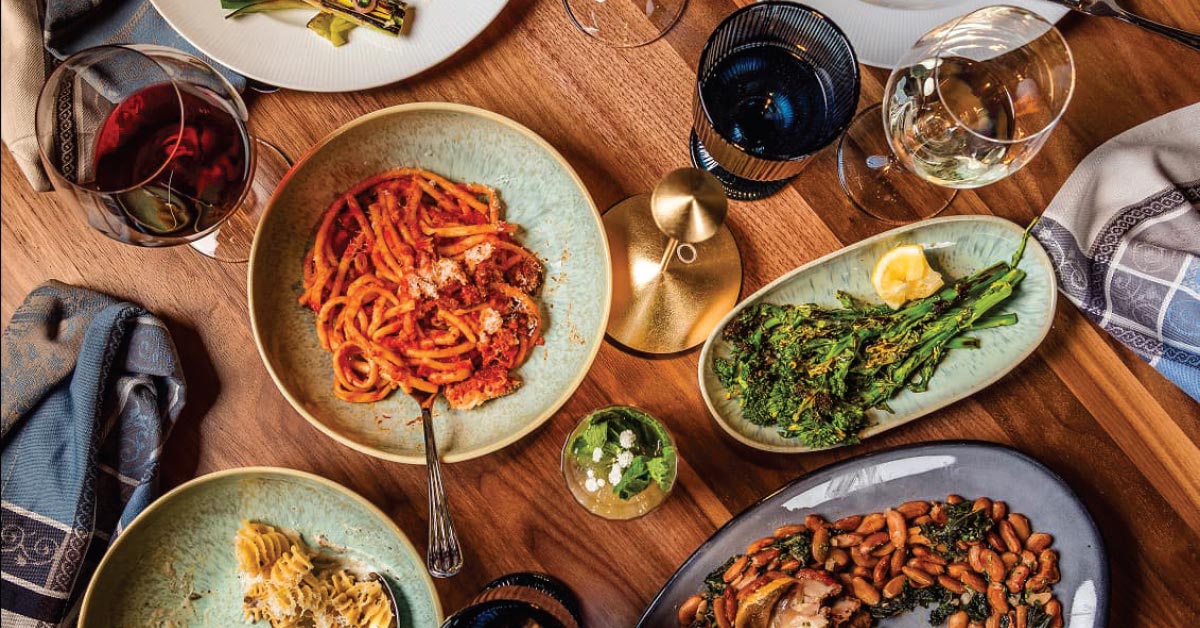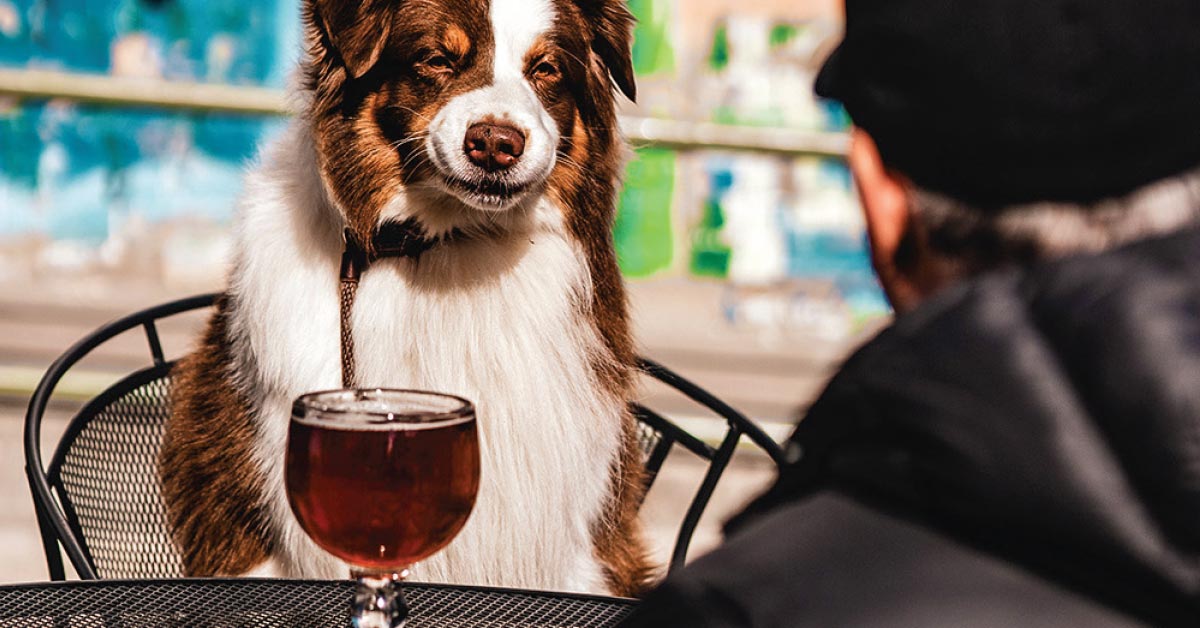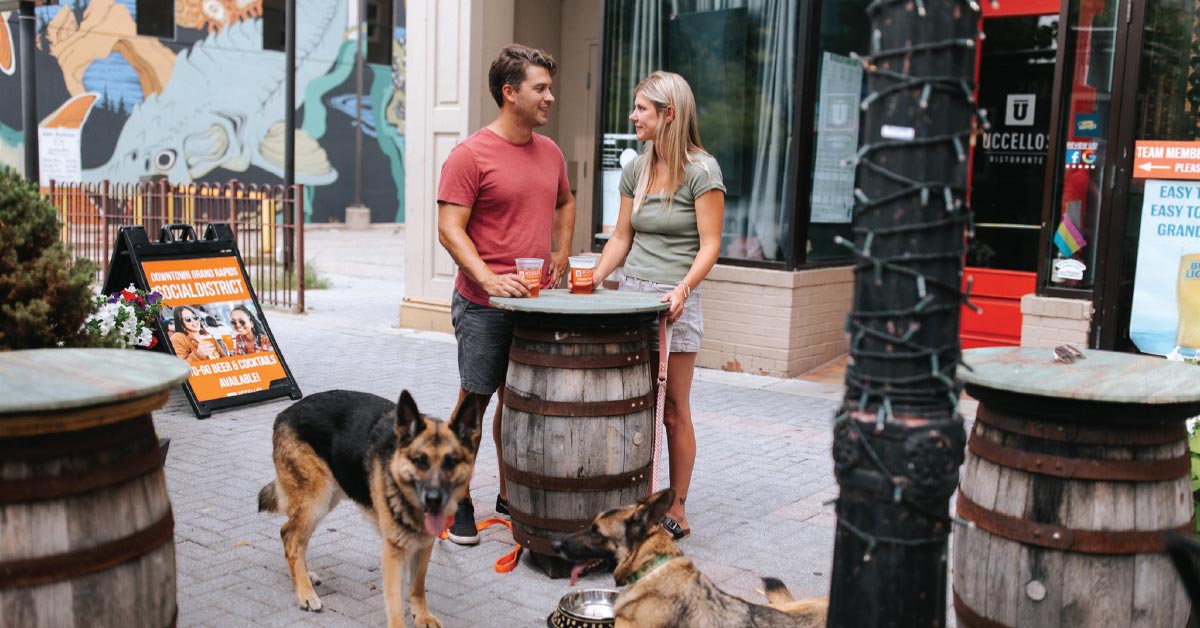In the beginning, there was beer. It was fizzy and we drank it and it was fine. You had it with your family, you had it with your friends, sometimes for dinner, sometimes upside-down, hoisted above a keg, suckling from the spigot like a binkie. Maybe it tasted like old cream soda or a possum’s breath. Then someone had an idea: what if we made beer good? The idea took off like gangbusters. Now, there are roughly a billion craft breweries, and the world will never be the same.
And how far we’ve come. I haven’t been legal that long, but even in my short span, I’ve noticed shifts. When, for example, was the last time you had a black IPA? How about a six-pack of Fat Tire? They say our taste buds change every seven years, and with craft beer ready to complete its Saturn return, it only makes sense that the landscape should look completely different from decades ago. Let’s take a moment to consider the state of beer in 2018 and the trends that will come to define our future pours.
Juice and Champagne
First, we turn to craft beer luminary, Jak Mercer, the award-winning beverage director and GM at Logan’s Alley for the past seven years. Despite the accolades, Mercer remains humble, “I’m the local ornament. I hang out and I’m shiny.”
He’s a whip-smart conversationalist and if you’re not prepared for a verbal spar, it can feel like defending yourself in a batting cage with a wooden spoon. That said, his hot takes are grounded in a wisdom that can only come from a tenure at, as he puts it, “a neighborhood bar with a craft beer obsession.” For Mercer, it’s been impossible to ignore the sea change West Michigan’s beer scene has experienced.
“Twenty-two taps used to be a daunting amount; now I don’t have room for all my friends,” he said.
Because of good beer’s ubiquity, throwing a couple bones to the craft drinker — a Two Hearted here, a Perrin Black there — hardly cuts it anymore. The masses have evolved and are eager to dip their toes into unknown waters.
“We open at 7 a.m. and get the nurses. They deal with literal crap all day long and are still willing to break habit and challenge themselves with some new sour,” Mercer said.
While our tastes grow increasingly omnivorous and breweries flirt with more styles than you can shake a stick at, IPAs have proven to be both trendsetters and trend proof.
“People always gravitate toward them,” Mercer said. “First it was west coast, then black IPAs, then sessions.”
And if you’ve been hiding under a rock for a year, welcome back — the juice is loose. As the New England IPA lays claim to its manifest destiny, its haze has finally swept across our state. It’s hard to discuss this trendy style without mentioning the elephant in the room: Old Nation’s M-43. The two are inextricably linked, like siblings running a three-legged race.
I remember my first glass well, its opaque orange hue reminiscent of the surface of Venus. But after all these pours, it does beg the question: how long can a beer coast on the coattails of a trend?
“As long as it’s quality, it’s sustainable,” Mercer said. “If it was just some crappy knock-off that would be one thing, but (Old Nation) happened to make a really solid tasting beer.”
With their low level of bitterness and unique appearance, New Englands are a great gateway to the IPA averse. We wouldn’t expect the bandwagon to lose a wheel any time soon, considering the exceptional choices popping up at places like Brewery Vivant, Odd Side and Transient Artisan Ales.
Even so, the Brut IPA trails hot on the heels of the haze craze. This trending style is brought to you by the enzyme amyloglucosidase, which sounds like a bio-weapon but actually reduces residual sugars, leaving a beer bone-dry and champagne-like after fermentation.
Steve Van Dommelen, bar director at Hops at 84 East, views the style as “the perfect antithesis to the New England style. It’s clean, complex and pairs great with a wide range of food.” Whether or not Bruts will rile the zeitgeist like their predecessor, the fact that brewers can continue to innovate within the hoppy genre proves to Van Dommelen at least that “IPAs will forever be the king.”
Sour Power
The hubbub for barrel-aged stouts has laid the groundwork for other specialty beers to ascend. Mitch Ermatinger, proprietor and barrel wizard at Speciation Artisan Ales, has noticed how the pond has widened to contain some of his wackier, sour experiments.
“I think using odd or relatively unknown ingredients will become more common, along with beer/wine hybrids,” Ermatinger said. “I really enjoy wine but kind of hate wine culture, so I’d like to see more wine being incorporated into beer styles.”
Uncork a bottle of his Gram Positive, an open-fermented sour with obsidian barley and concord grapes and you’ll see — Ermatinger is clearly making good on his crystal ball promises.
J. VanRadsky, keg wrangler at The Mitten Bar in Ludington, commented on how quickly the public has wised up to style, “We’ve gone from what is this weird stuff, to the assumption that we’ll have one on draft. Some people walk in and if there’s no sour they’ll say, no thanks I’ll come again some other day.” Fortunately, access to more easily produced examples like Goses and Berliner Weisses helps with the introduction, “The number of quick and dirty ones have significantly increased. It’s a nice way to break people in,” VanRadsky said. “Places like Arbor and Vivant with their massive foeders have the long-haul sours nailed down, but you don’t necessarily want to hand someone a flanders and freak them out.”
Historically one of the oldest styles, sours are obviously more than a diversion, and there’s still plenty frontier left to explore. “There’s a point of attrition with IPA’s where you burn out,” VanRadsky said. “I think sours reinvigorate your tongue.”
Keep it Simple
Rick Martinez, beer program manager at HopCat Grand Rapids, has a tight pulse on trends in the industry too.
“I think we’ve seen the beer in Grand Rapids change in the same way our palates do,” Martinez said. “It starts with malt-forward approachable ambers and browns. Then barrel-aged stouts stretch that capacity. IPAs became more prevalent and a fail safe. Entry sours like goses and berliner weisses follow from there.”
It all comes full circle, and now we see a reactionary movement forming as a foil to all these aggressive flavors. Breweries compete in an arms race to see who can create cleanest, simplest lager and you find a 24 pack of Founders Solid Gold wedged between racks of Bud and Busch. You have to wonder who’s going after whose piece of the pie. Van Dommelen has seen the scheme work firsthand.
“My dad drank Michelob Ultra like it was going out of style, but now he’s a Solid Gold convert,” he said.
It makes sense. After a hard day’s work, I’d much rather kick it with a kolsch than a hop bomb.
Another trend Martinez would like to see take hold is the appreciation of benchmark styles.
“When it comes down to sitting and drinking a beer, there’s nothing better than knowing exactly what you’re getting and finding nuances you missed before,” he said.
Maybe that means ESBs, the ultimate beer nerd style, are due for their moment in the spotlight. Like a Steely Dan record, they’re easy-breezy and sophisticated, with undeniable depth under scrutiny, yet somehow left outside the pantheon of rock ‘n’ roll canon.
“Light beers are really appreciated in the craft beer industry because there’s nothing to hide behind,” Martinez said. “They don’t lack complexity but aren’t eye-catching like some gimmicky beers are.”
Ultimately, our future beers are impossible to predict, but we can take stock and appreciate how awesome West Michigan’s beer scene is presently.
“We have access to just about everything,” Martinez said. “It’s a unique dilemma to have.”
At the end of the day, your favorite beer should be the one in your hand.





